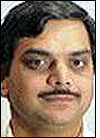The United States Army Research Laboratory (ARL) and the United Kingdom Ministry of Defense are holding special events today to inaugurate a joint, long-term research project. The defense organizations have assigned a consortium of industry and academic organizations to lead the project.
The group was formed and is being led by IBM‘s research arm, in response to a bid from the governments to assemble a cross-industry group that would explore advanced technology for secure wireless and sensor networks to support future US-UK coalition military operations. This group, the / International Technology Alliance (ITA), was selected from a field of five contenders. Other groups were led by BAE Systems, EDS,Northrop Grumman and Raytheon, according to IBM researcher Dinesh Verma, ITA’s program manager. The research project may span 10 years and receive up to $135.8 million in funding from the governments.
The consortium is comprised of 25 entities, including IBM and Honeywell in the United States, and LogicaCMG and Roke Manor Research in the United Kingdom, as well as seven U.S. and seven U.K. academic institutions. These include Columbia University and UCLA in the United States, and the University of Aberdeen and Imperial College in the United Kingdom. The consortium’s work will focus on four main areas of study: network theory; security across a system of systems; sensor information processing and delivery; and distributed-coalition planning and decision-making.
The group is initiating 12 projects (listed here)—three each for the four major research areas—all requiring cross-industry, cross-discipline and cross-border collaboration. Verma says work in sensor-information processing and delivery will focus on a number of strategic uses of tracking devices, such as how armed forces could use RFID tags linked to sensors for tracking enemy soldiers or insurgents. Such a project would require the collaboration not only of experts in sensor-information processing and delivery, he says, but also experts in distributed-coalition planning and decision-making. ITA members with knowledge in this field would provide the background in social dynamics such a project would require, since tracking devices would need to be embedded into the clothing or equipment of enemy soldiers or insurgents without their knowledge. Experts in networking theory, meanwhile, would provide the secure IT infrastructure required to deploy such a system on a large scale.
Verma says the ITA represents a “powerhouse” of different institutions—many of which have products or goals that, at least to some degree, compete with each other—coming together with the common goal of developing technology solutions that will benefit both ALR and the U.K. Ministry of Defense. “I’m not aware of any other [group] of this nature or magnitude, with so many significant U.S. and U.K. research resources coming together,” he adds.
The ITA’s goal is to examine sensor-information processing technology, as well as sensors’ roles within wireless networks and how to control and secure the constant and pervasive flow of data the device will generate. ITA members with expertise in distributed-coalition planning and decision-making will provide insights into how sensor-based networks can be effectively deployed within U.S. and U.K. military theaters of operation.
IBM’s sensors and actuator-solutions business unit has, in recent years, developed enterprise-level RFID middleware, the WebSphere RFID Premises Server (see IBM Upgrades WebSphere RFID Platform). This middleware is involved in many projects utilizing RFID systems for supply-chain optimization, asset tracking, work-in-progress inventory and production tracking (see Ultimate Control: RFID-Enabled Manufacturing).
Verma says the ITA was notified of its successful bid in May. Now that the major areas of study and 12 projects have been identified, research will soon begin in earnest. IBM and other companies involved in the research will also contribute some funding to the project, he adds, since the individual companies are likely to benefit from the knowledge base that the large team builds.


